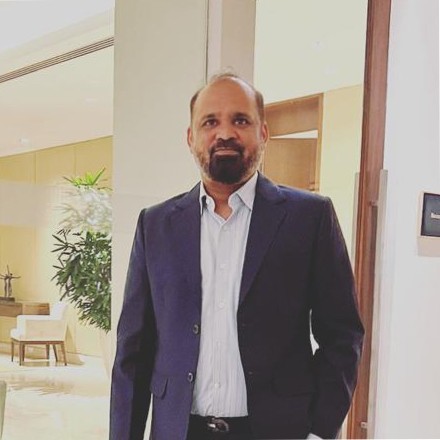THIS ARTICLE IS POWERED BY

-B Swaminathan
Almost every company has used cloud computing to varying degrees in its operations. To protect against the biggest threats to cloud security, the organization’s cloud security strategy must address the cloud adoption issues and everything else that follows the integration. As much as possible organizations should plan around building their applications on a single public cloud provider. This will eliminate the needs for complex management tools and skilled resources to manage. However, organizations have chosen best-of-the-breed offerings from multiple cloud providers, in addition to building their own private cloud for various reasons (cost, complexity, compliance). Not to mention about various popular SaaS platforms acquired already. To achieve the desired hyper-scale performance, thorough testing is required. Integration with multiple solutions, interoperability, ease of scaling, adequate security aspects, monitoring and management factors to be considered. With discussions around cloud in the front stage leading channel partners speak on various aspects of cloud and their facets.
Mohan Madwachar, Director – Sales & Strategy, Secure Network Solutions India Private Limited

Cloud Security Posture Management (CSPM), Cloud FinOps, HyperCloud are some of the emerging Cloud technologies. Server virtualization brought-in a software overlay hiding the complexities of underlying hardware, Network virtualization did the same to underlying network components such as switches, routers and load balancers; Hypercloud does the same to several public and private cloud infrastructure underneath. Cloud is considered as successful tool to overcome the disruptions in the supply-chain the industry is seeing the last couple of years. Provision of multiple cloud solutions, though meeting the immediate needs, has only introduced more complexity in management, unpredictable billing, lack of skillsets to monitor and manage. Hypercloud simplifies it by creating an overlay that not only promises to improve the performance, but also to benefit from the automation, programmability, improved security, and open architecture to build upon. In essence, you can procure cloud hardware, software, services, and functions from any Cloud through the hypercloud platform and get a singular view, and management. Underlying complexity is shielded from the users.
Dhirendra Khandelwal, Esquare Systems & Technologies, Bhubaneswar

According to Foundry’s survey, cloud computing found that 84 % of enterprises now have at least one application or element of their computing infrastructure in the cloud by 2022. And that in the following 18 months, 10% more companies are anticipated to migrate to a complete cloud environment. On the other side, Serverless computing is rapidly growing at a quick pace. Expect to see more businesses use serverless solutions in the upcoming year as it offers yet another way to improve team agility and save costs. By changing traditional data storage and handling procedures, cloud technology can speed up access to information and overcome the barriers that the industry stakeholders and patients encounter. Despite the numerous benefits of cloud computing, there are some drawbacks and challenges. Healthcare organizations are hesitant to adopt cloud computing due to security concerns, including patient information confidentiality, privacy, and service costs.
Anand V, CEO, Raksha Technologies

Though large cloud vendors guarantee certain security protections, they treat cloud security as a shared responsibility. These vendors relieve significant operational burden from their customers by investing in state-of-the-art security technologies. However, the customer is entirely in control of managing configurations, security updates, and the guest OS, data, and apps. The case for an on-site private cloud would be different since the infrastructure is dedicated for use by a single customer organization and its authenticated users. The data center is often virtualized or software-defined, and these customers can maximize control over their resources. However, fine-grained visibility and control to combat hybrid cloud security solutions require in-house expertise, advanced technology solutions, and sufficient computing resources to accommodate the growing volumes of security-sensitive information and apps running within private cloud deployments in-house.
Mangesh M Pardeshi, Director at Comnet Solutions

At first glance, it appears that the Cybersecurity landscape has kept up with advancements in networking, including cloud computing. Unfortunately, all that’s shiny is not gold. Expensive, glittery “solutions” that deliver limited insights or, worse, overlook threat behavior can lead to dire consequences for an organization. But these organizations are relying more on multicloud or hybrid-cloud environments without a true understanding of their security vulnerabilities, threats, or if an incident had occurred at all. Consistent data protection and privacy is difficult to achieve in diverse environments with their own built-in security tools. Many organizations struggle to protect data properly in multicloud environments in compliance with policy and regulatory requirements. Looking out across the vast Cybersecurity marketplace, it’s immediately obvious that organizations have more choices than ever before. Countless vendors promise powerful AI solutions that will solve fundamental issues facing modern organizations, yet many fall short on fulfilling those promises
Milton Dorariraj, Assistant Country Manager at Netpoleon India

Cloud security is a shared responsibility between the cloud service provider and the customer. It’s crucial to understand the specific security responsibilities of each party and collaborate to ensure comprehensive security measures are in place. Addressing the challenges in cloud security requires a multi-faceted approach that encompasses various layers and practices.
Some of the key aspects of a cloud security includes, strong access controls, data encryption, secure configuration management, threat monitoring and detection, regular vulnerability assessments, relevant compliance and governance, paying attention to the security of APIs and integrations with other systems along with employee training and Awareness, incident response and disaster recovery and regular evaluation of the cloud provider.


